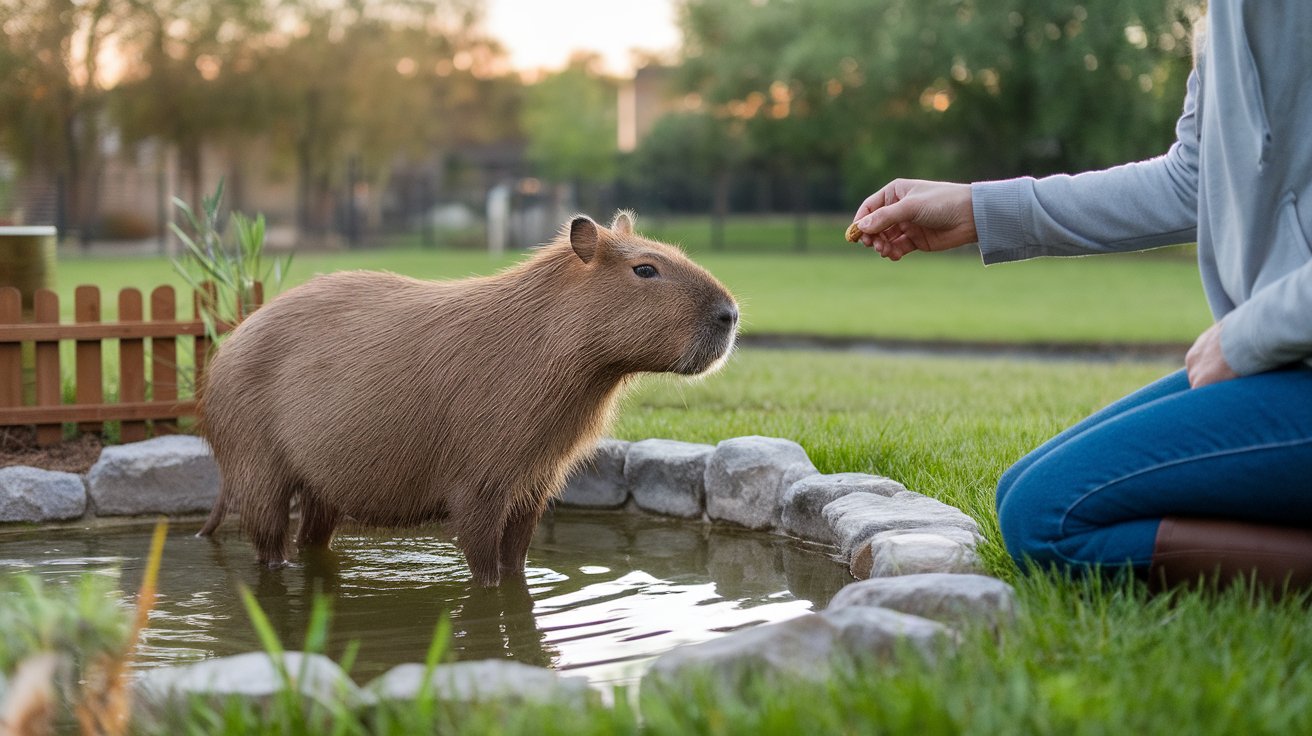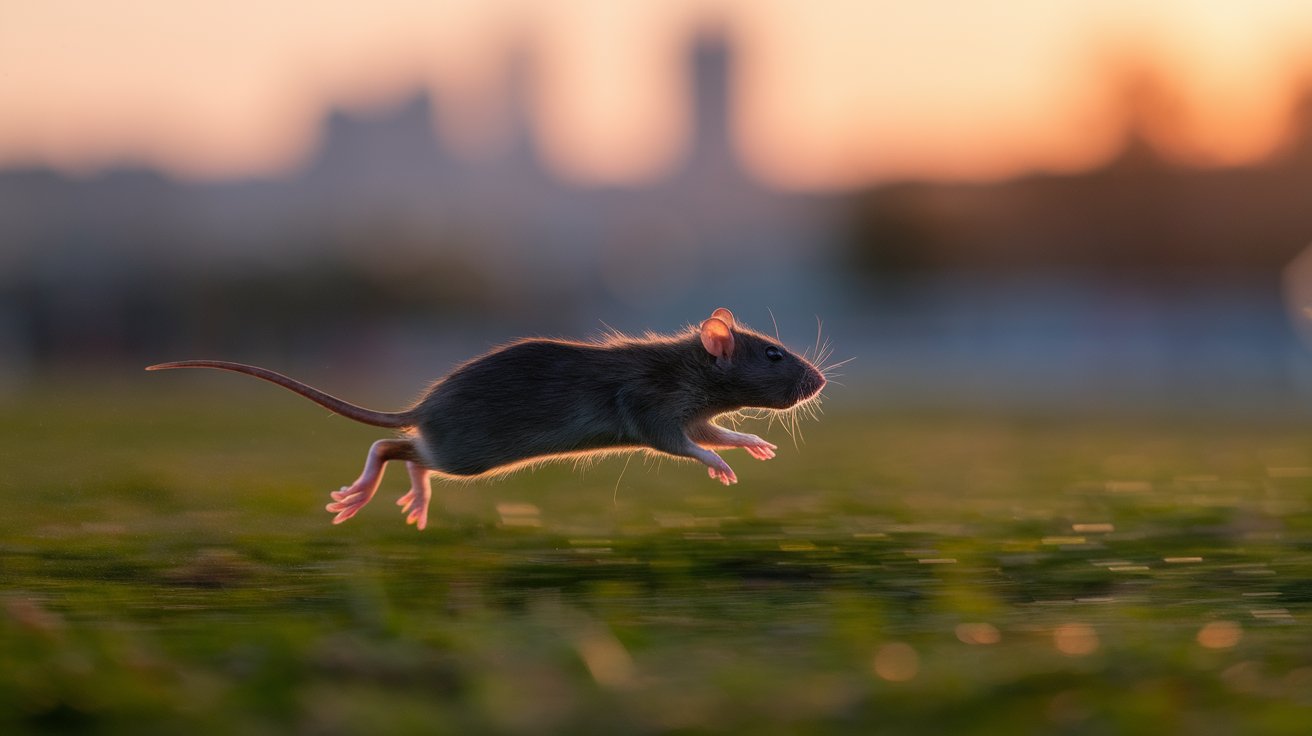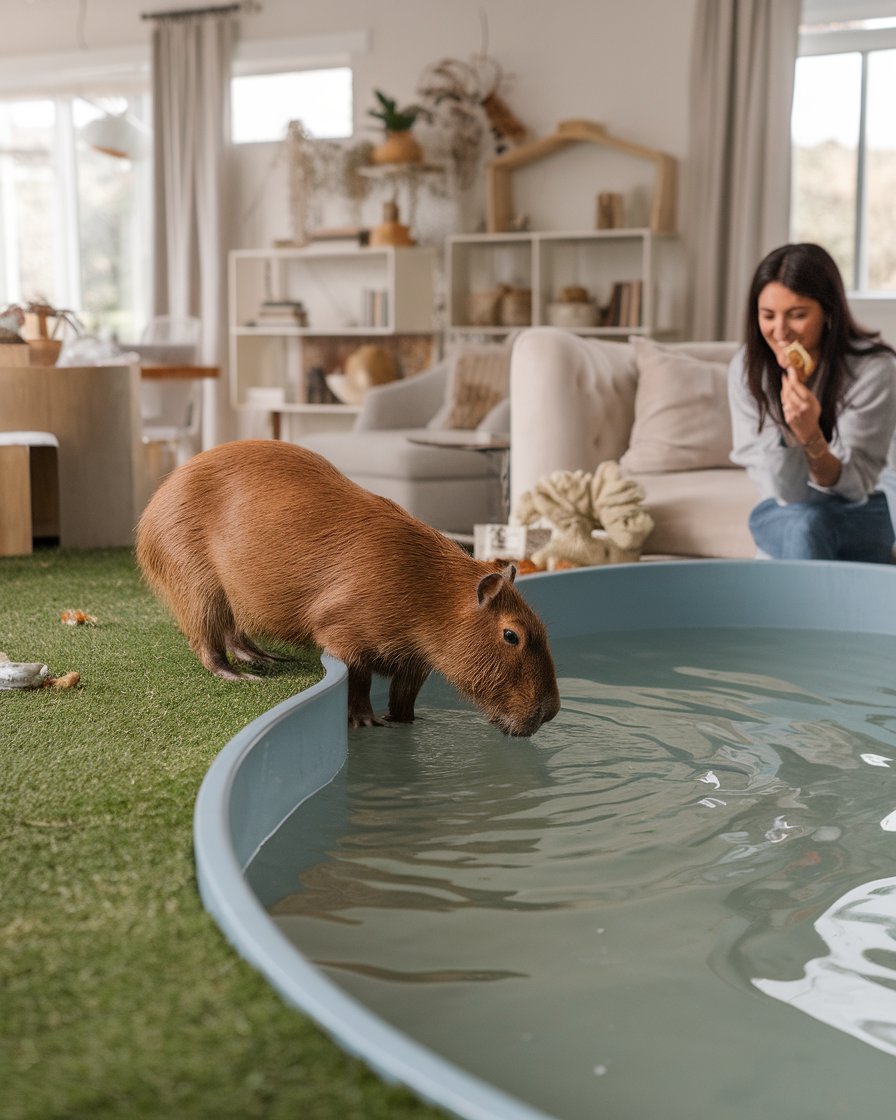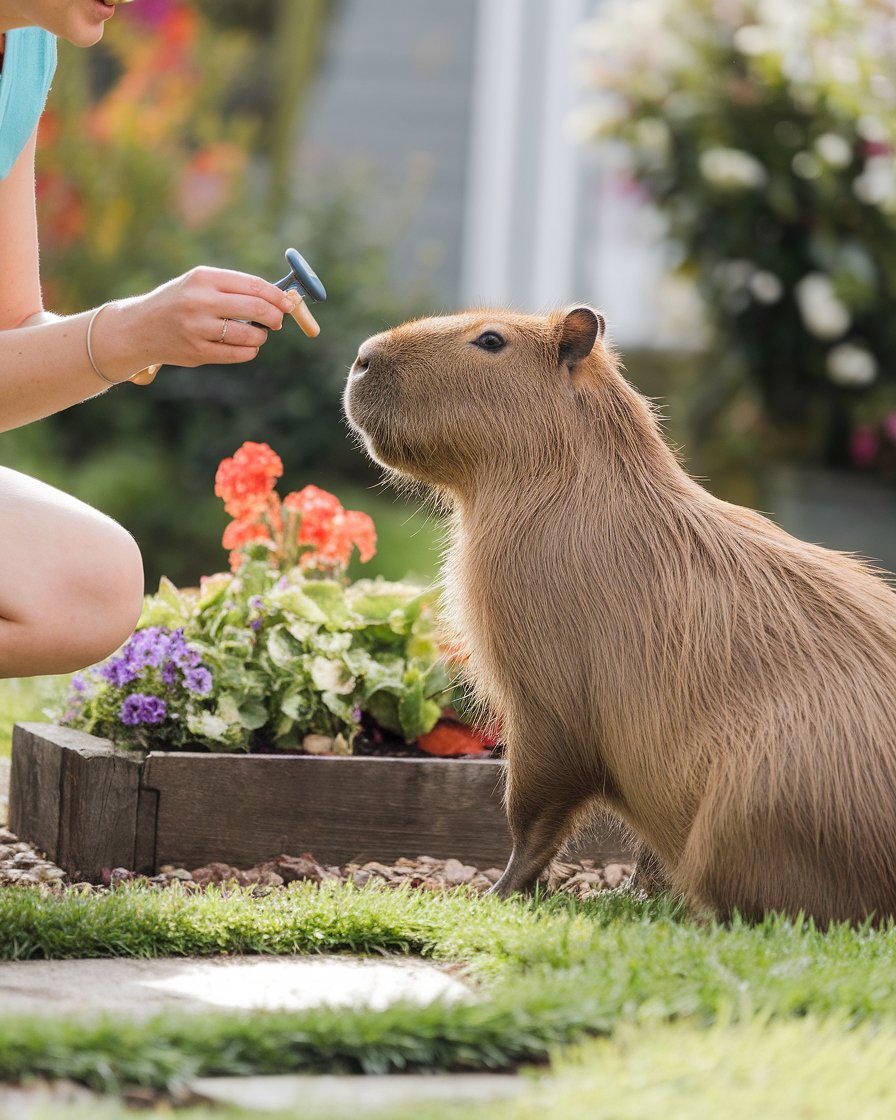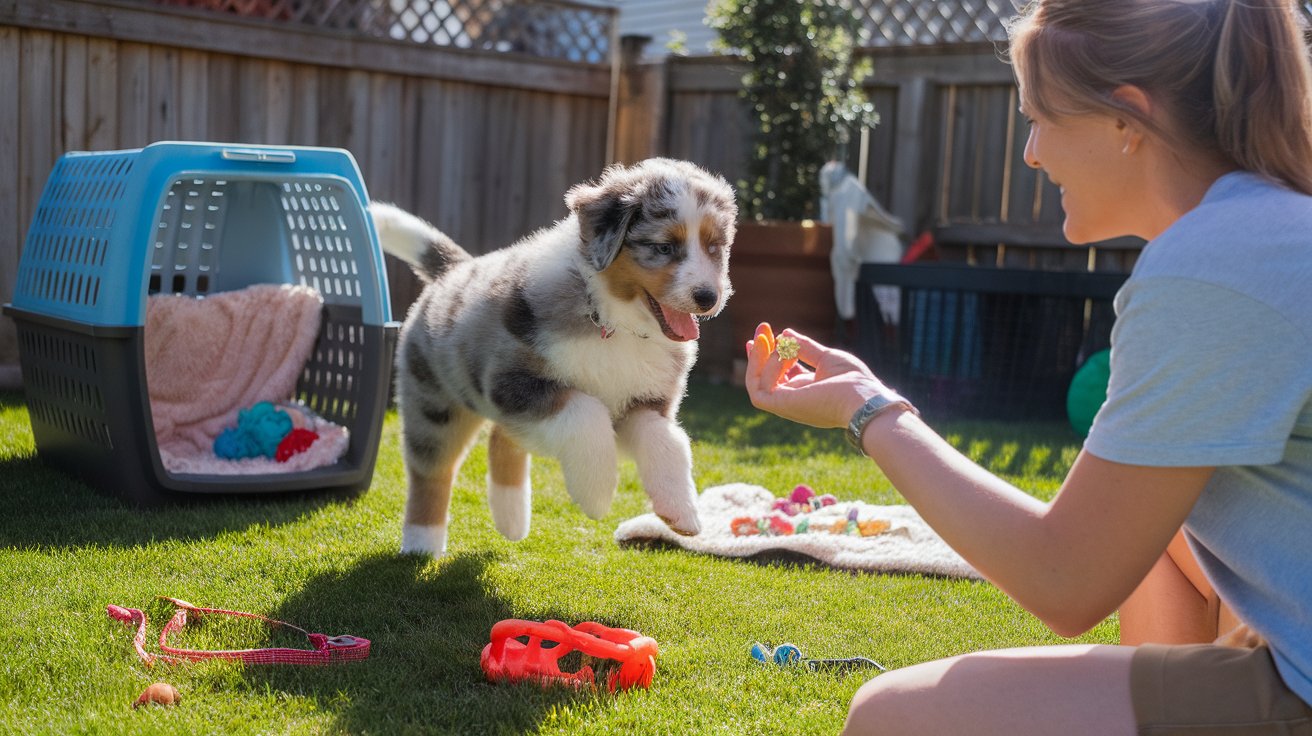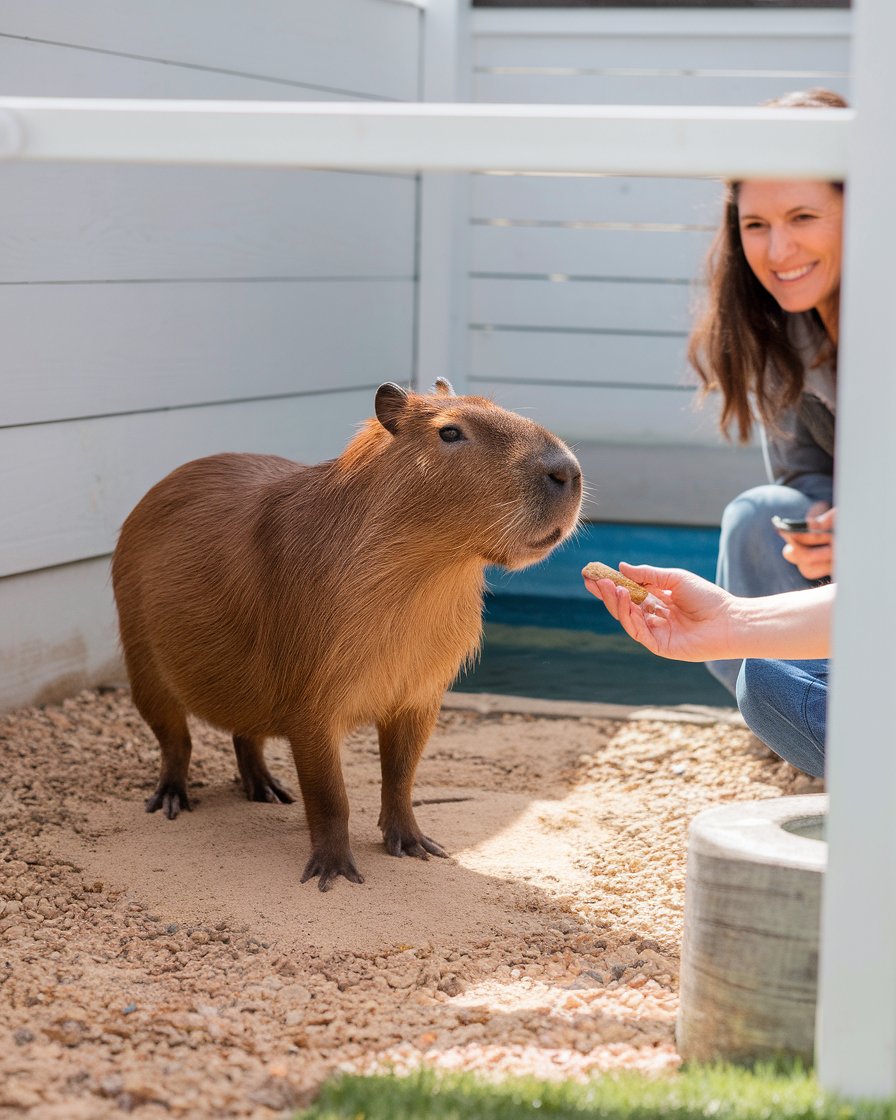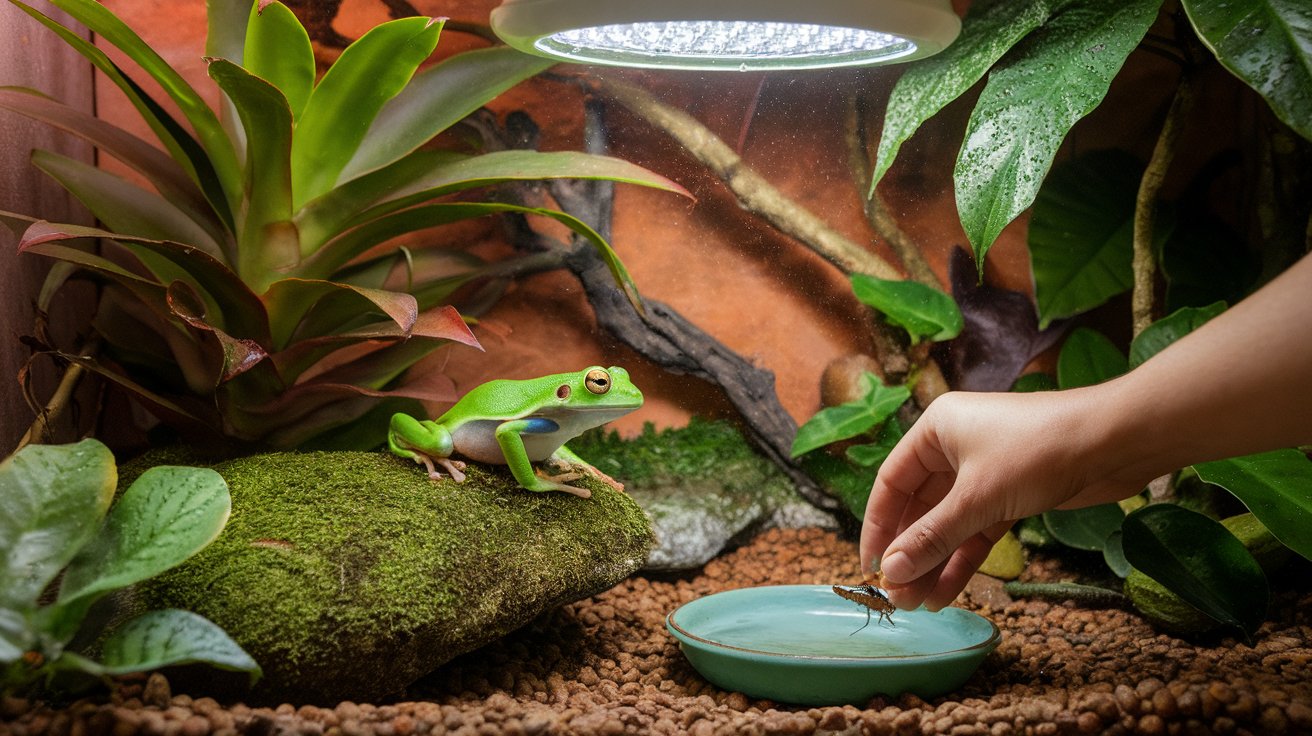Introduction
Capybaras are fascinating animals known for their social nature and calm demeanor. As the largest rodents, they have specific needs that must be met, especially when kept as pets. Capybaras may thrive in environments that closely mimic their natural habitat, as they are semi-aquatic and require access to water for both swimming and relaxation. If you’re considering getting a capybara as a companion, it’s crucial to understand their behavior, diet, and social needs. Capybaras typically graze on grasses and other plants, so providing a proper environment for them to graze and interact is key to keeping them happy and healthy.
When it comes to training capybaras, many owners wonder whether these wild animals can be potty trained. The good news is, with patience and proper techniques, potty training success is possible. Capybaras are intelligent and can be trained to use a designated potty area. By establishing a routine and using positive reinforcement, capybara owners can guide their pets to the appropriate spot, making daily care easier while ensuring the capybara feels comfortable in its home environment.
Key Takeaways
Capybaras are social, semi-aquatic animals that require an environment mimicking their natural habitat for optimal health and happiness.
Capybaras thrive in groups and often engage in activities like grooming and swimming, which are key to their well-being.
Capybaras can be potty trained with patience, using positive reinforcement to guide them to a designated potty area.
Understanding capybaras’ natural elimination habits, such as defecating near water, helps in successfully potty training them.
Positive reinforcement techniques, including treats and praise, are crucial for building trust and motivating capybaras during training.
Creating a safe, well-designed habitat with access to water and space is essential for reducing stress and enhancing the capybara’s receptiveness to training.
Understanding Capybara Behavior
Capybaras are fascinating creatures, often noted for their calm and social nature. As the world’s largest rodent, capybaras need environments that reflect their semi-aquatic lifestyle. Living in groups is essential for their well-being, as they thrive on interaction. For anyone wanting to keep a capybara, it’s important to recognize the value of companionship; a capybara companion can help meet their social needs. They engage in activities like grooming and lounging in water, which not only strengthens social bonds but also helps regulate their body temperature. Capybaras eat primarily grasses and vegetation, which supports their complex dietary requirements. For those considering buying a capybara, understanding that capybaras are wild animals with specific needs is crucial. To ensure their happiness, it’s essential to provide an environment that mimics their natural habitat and accommodates their behavioral needs.
Can Capybaras Be Potty Trained?
1. Understanding Capybara’s Natural Elimination Habits
Capybaras typically defecate near water in the wild to hide their scent from predators. This behavior can be helpful when starting potty training. Recognizing their natural habits can allow you to create an environment that encourages them to use a specific potty area.
2. Create a Routine
Establishing a consistent routine is critical to successful potty training. Take your capybara to the designated potty area after meals, naps, or periods of activity. The more you follow the routine, the faster your capybara will learn where to go.
3. Use Positive Reinforcement
Rewarding your capybara with treats or praise when they use the correct spot is essential. Positive reinforcement strengthens their understanding that the behavior is desirable, helping to build long-term potty habits.
4. Designate a Specific Potty Area
Providing a designated space for potty time is crucial. Capybaras respond well to having a set place to go. Ensure the area is clean and free from distractions, and guide your capybara there regularly to encourage proper use.
5. Be Patient and Consistent
Potty training a capybara may take time, and it’s essential to remain patient and consistent throughout the process. Capybaras may not respond immediately, but with time and reinforcement, they will begin to understand the routine.
6. Monitor and Adjust Based on Behavior
If your capybara is having trouble adjusting to the potty training routine, consider modifying the environment or schedule. Monitor their behavior closely to ensure the process is comfortable and stress-free for them.
Natural Instincts of Capybaras
Capybaras’ natural instincts are shaped by their semi-aquatic habitat. Being near water is essential for their survival, as it helps regulate their body temperature and provides a quick escape from predators. Their large, webbed feet make them excellent swimmers, and they can often be found basking in ponds or rivers. Living in groups is another key instinct, as capybaras rely on the safety that numbers provide. Group living is particularly important to their ability to ward off predators and reduce stress. For pet owners, providing a suitable environment that mimics these natural conditions is vital for a capybara’s well-being.
Communication and Socialization
Capybaras communicate through a wide range of vocalizations and behaviors, which are essential for maintaining harmony in their social groups. From barking to purring, each sound has a specific meaning that helps them interact with one another. Grooming is another way capybaras socialize, strengthening bonds within their groups. This social grooming behavior is critical to their communal living. If you are considering owning a capybara, it’s essential to recognize that they are social animals that require interaction, not just with humans but also with other capybaras. Keeping them in isolation can lead to stress, so it’s important to provide them with social companions for a healthy, fulfilling life.
Preparing to Train a Capybara
Training a capybara requires preparation and understanding of their natural behavior. As semi-aquatic animals, capybaras have specific needs that must be met to ensure a positive training experience. They are social creatures that thrive in groups, and their environment should mimic their natural habitat. Whether you plan to own a capybara as an exotic pet or simply want to improve their behavior, it’s important to create an environment that supports both their physical and social needs. From providing access to water to establishing a secure and spacious area for them to roam, preparing their habitat plays a key role in their overall well-being and success during training. With patience and the right approach, capybaras can be trained effectively.
Case Study: Successful Potty Training of a Pet Capybara
In 2019, a capybara owner from California documented her experience training her pet capybara, named “Charlie,” to use a designated potty area. Charlie, a semi-aquatic animal with natural habits tied to water, was initially trained by observing his natural elimination patterns. The owner created a routine by taking Charlie to the same spot immediately after meals and waking up from naps. She ensured the area mimicked his natural environment, complete with a small water feature to reflect his wild tendencies.
Positive reinforcement played a key role in the training process. Whenever Charlie successfully used the potty area, he was rewarded with treats and verbal praise. Over time, Charlie began associating the designated area with elimination, reducing accidents significantly. The case study highlighted that patience, consistency, and understanding capybara behavior are crucial elements in successfully potty training a capybara, showing that with the right approach, such training is achievable.
Creating a Safe Habitat
Creating a safe and suitable habitat is the first step in training a capybara. Since capybaras are large and semi-aquatic, their enclosure must have enough space to allow them to swim, graze, and explore. Providing access to water is essential, as capybaras often use water to cool off and feel secure. Additionally, the habitat should include shaded areas for resting and hiding spots to reduce stress. Removing any potential hazards, like sharp objects or unsafe surfaces, ensures their safety. A well-designed environment not only helps capybaras feel more comfortable but also reduces anxiety, making them more receptive to training efforts, whether it’s basic commands or more complex behaviors.
Choosing Appropriate Training Methods
When it comes to training a capybara, positive reinforcement is the most effective approach. This method encourages desired behaviors through rewards such as treats or affection. Since capybaras are intelligent and social animals, training sessions should be designed to cater to their instincts. Understanding their need for companionship and interaction will improve the outcome of the training. Patience is crucial—capybaras may not respond immediately, but with consistent reinforcement, they can learn tasks such as using a designated potty area or responding to commands. Tailoring the training to the capybara’s individual personality will further enhance the effectiveness of the process, making it a rewarding experience for both the owner and the pet.
Basic Training Commands for Capybaras
Training a capybara as a pet requires patience, consistency, and a clear understanding of their behavior. Capybaras are intelligent and social animals, making them highly receptive to training when approached with care. One of the essential elements in training is building trust through positive reinforcement. Whether you’re teaching simple commands or addressing more specific tasks like potty training a capybara, methods should focus on creating a sense of security. For instance, guiding a capybara to use a designated potty area is key in developing consistent habits. To succeed, it’s crucial to reward your capybara with treats for good behavior. Effective training creates a stronger bond between the capybara as a pet and its owner, ensuring a well-behaved companion.
Clicker Training Techniques
Clicker training is an effective technique that works well with capybaras due to their intelligence and responsiveness. By using a clicker, you can mark the exact moment a capybara performs a desired behavior, making it easier for them to understand what is expected. Pairing the click sound with treats or rewards helps the capybara associate the click with positive outcomes. For example, if you want your capybara to sit or use a designated potty spot, clicking at the right moment followed by a treat reinforces the behavior. Over time, capybaras will respond quicker to commands as they learn to connect their actions with rewards.
Positive Reinforcement and Rewards
Positive reinforcement is essential when training a capybara. By rewarding good behavior with treats, praise, or playtime, you foster a trusting relationship. Capybaras, being social animals, respond well to affection and gentle encouragement. Whether it’s for learning to use a designated potty area or responding to commands, consistency in rewarding positive behaviors ensures that your capybara feels safe and motivated. It’s important to remember that every capybara has its own pace, so patience is key. As long as you are consistent and kind, your capybara will become a well-trained and happy companion, making the training process rewarding for both pet and owner.
“Patience, persistence, and perspiration make an unbeatable combination for success.” – Napoleon Hill
Can Capybaras be Potty Trained?
Capybaras are intelligent, social animals, and like other pets, they can be trained to use a designated potty area with the right techniques. While capybaras are semi-aquatic and spend much of their time near water, they do establish specific locations for defecation. Potty training a capybara requires patience, consistency, and understanding of their natural behaviors. Owners must recognize that, although capybaras are receptive to training, their wild instincts can influence the process. Successful potty training may take time, but it’s certainly possible with the right approach. With regular routines and positive reinforcement, capybaras can learn to adapt to their home environment and use a specific potty spot, much like other domesticated animals.
Understanding Capybara Elimination Habits
Capybaras have natural elimination habits that can be leveraged during potty training. In the wild, capybaras tend to defecate in or near water, which helps mask their scent from predators. However, when kept as pets, capybaras can learn to use a designated area for their bathroom needs. It’s important to observe their tendencies, such as when and where they typically defecate. By recognizing these behaviors, owners can guide their capybara to an appropriate spot. Keeping an eye on their schedule, especially after meals or rest periods, can aid in understanding their elimination routine. This knowledge is vital when starting the potty training process.
Tips for Potty Training Your Capybara
To successfully potty train a capybara, establishing a routine is key. Regularly guide your capybara to the designated potty area, especially after meals, naps, or playtime. Positive reinforcement, such as offering treats or verbal praise, encourages them to use the correct spot. Ensuring that the potty area is consistently clean will also help reinforce it as the proper location for their bathroom needs. Be patient—potty training a capybara may take some time. However, with consistency, capybaras can learn to associate the designated area with elimination. Over time, this will reduce accidents and create a cleaner, more comfortable living environment for both pet and owner.
Conclusion
In conclusion, capybaras are highly social animals that need a well-designed environment to thrive, especially when kept as pets. Providing a capybara with ample space to graze, access to water, and social companions ensures they remain healthy and content. As semi-aquatic animals, capybaras require specific care that mimics their natural habitat, which includes not only a proper diet but also opportunities for interaction and relaxation.
When it comes to potty training, capybaras can be successfully trained with consistency and patience. Using positive reinforcement, such as treats and praise, helps capybaras associate a designated potty area with their natural elimination habits. Understanding that each capybara may have unique needs and tendencies, owners can encourage success by closely observing their pet’s behavior and maintaining a clean, stress-free environment. With the right approach, owning a pet capybara can be a rewarding experience.

